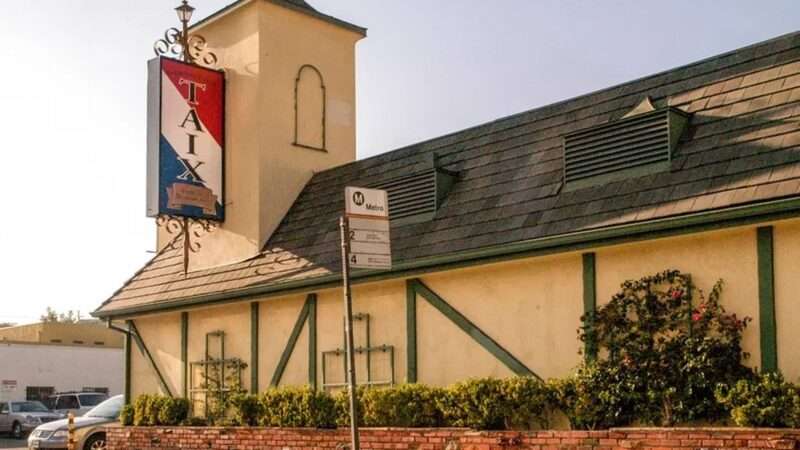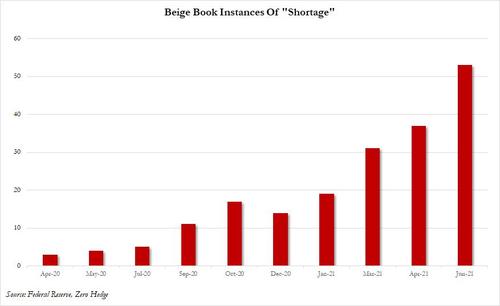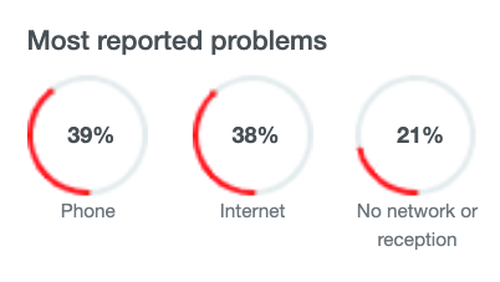
The editorial board of the Los Angeles Times is telling the city’s NIMBYs to stop trying to use historic preservation laws to shut down a needed housing development.
Today’s editorial is about the future of Taix French Restaurant, which has been operating on Sunset Boulevard in Echo Park since 1962. Its owner, Michael Taix, is attempting to sell the property to developers, who want to replace it with a mixed-use project that would include housing and commercial space.
Taix wants to reopen in a smaller space within this new development. He told Times reporter Emily Alpert Reyes that this change was necessary for his business to survive because he cannot continue to financially support the current building.
But historic preservationists—or those who claim to be but really just don’t want new housing in their neighborhood—have been fighting to stop the deal. Despite Taix saying that he can’t keep operating this space, one woman told Reyes that she wanted to preserve the building entirely because she had such great feelings about having eaten there. Taix’s livelihood is no match for her desire to “feel like [I] belong, and that the city means something to [me] other than real estate.”
Her memories will persist regardless of whether or not Taix French Restaurant remains, and it’s absolutely reprehensible for nostalgia to be used as an excuse to overrule somebody’s property rights and to stand in the way of L.A.’s need for more housing.
Reason has taken note of several terrible examples of people in Los Angeles (and elsewhere) attempting to use historic preservation regulations not to restore something that’s actually significant, but to stop development they don’t like, even over the objection of the longtime owner of the business. Here, the Times editorial board is just not having it:
It should be an easy choice. There’s no point in preserving the cutesy faux French shell of Taix if the restaurant goes out of business. And there’s no good reason to forgo much-needed housing, especially affordable housing, just so people can drive by the old Taix building and savor their memories. Nostalgia is not a sufficient reason to reject development.
While a Times editorial is probably a good avenue to reach these NIMBY types, I don’t hold out much hope they’ll change any minds. Most of the arguments against development in Los Angeles stem from a selfish love of the status quo from people who already own property and don’t want things to change. Sunset Boulevard is a transit corridor and prime for this exact kind of development. This should be the kind of location where battered old buildings that no longer serve their purpose are replaced with bigger buildings that can help make space for more people to live.
But a lot of Taix’s opponents don’t actually want to solve the city’s housing problem if it means changing the L.A. they know and love. The L.A. Conservancy pulls the typical NIMBY trick of insisting that it does support more and denser housing, but just not this particular housing because it’s … not more or dense enough. I smell disingenuousness:
In addition to standing up for historic places, the Conservancy strongly supports increased density and new housing when it makes sense, especially if much-needed affordable housing is provided. In this case, it is a “lose-lose” proposition as the proposed project provides minimal affordable housing, the design and density achieved is underwhelming, and it needlessly demolishes a longtime legacy business building and neighborhood landmark.
The proposal is for 170 apartments on the property. There are currently zero apartments on the property. That’s far from “underwhelming” density.
from Latest – Reason.com https://ift.tt/3fHJNNW
via IFTTT








